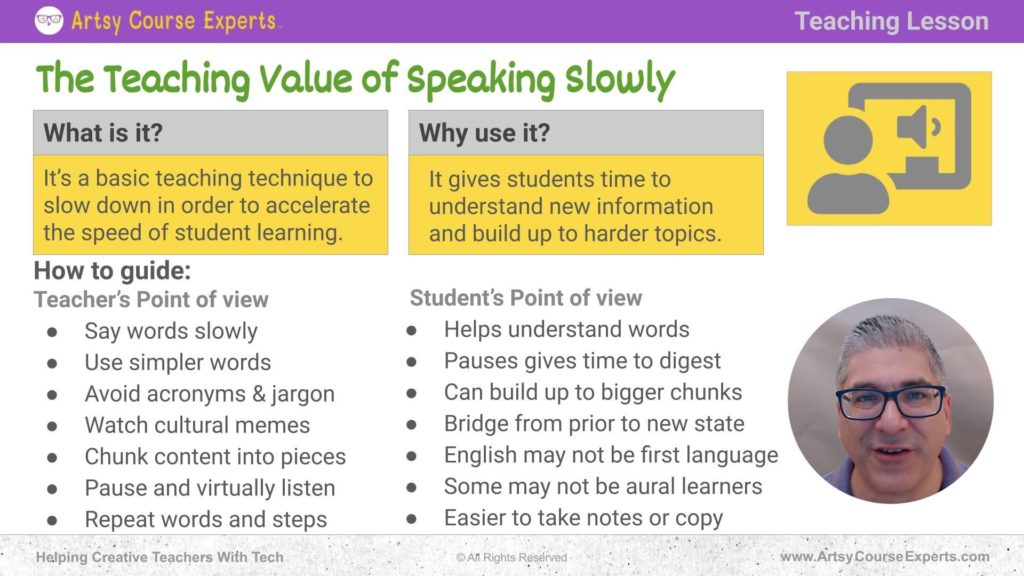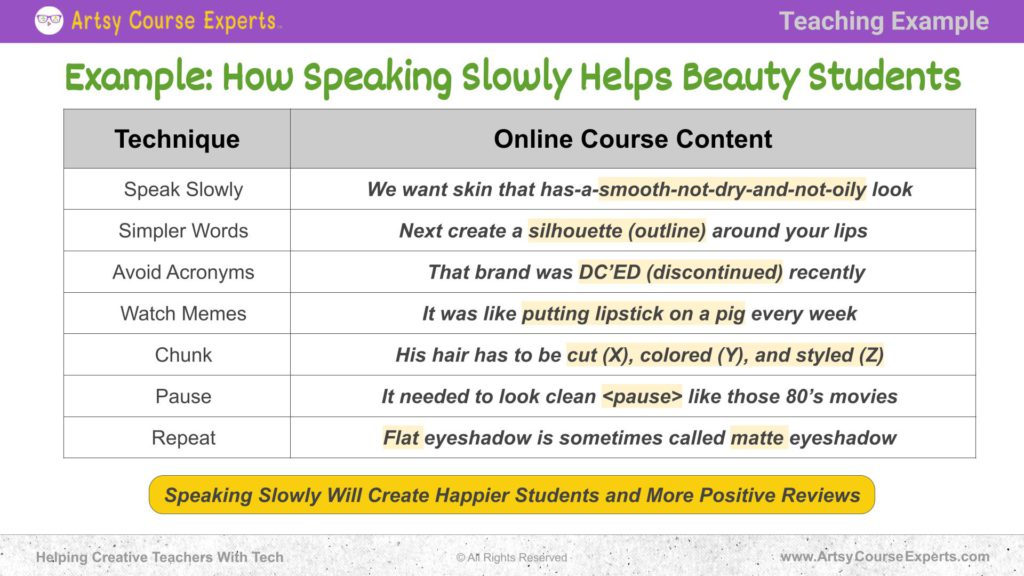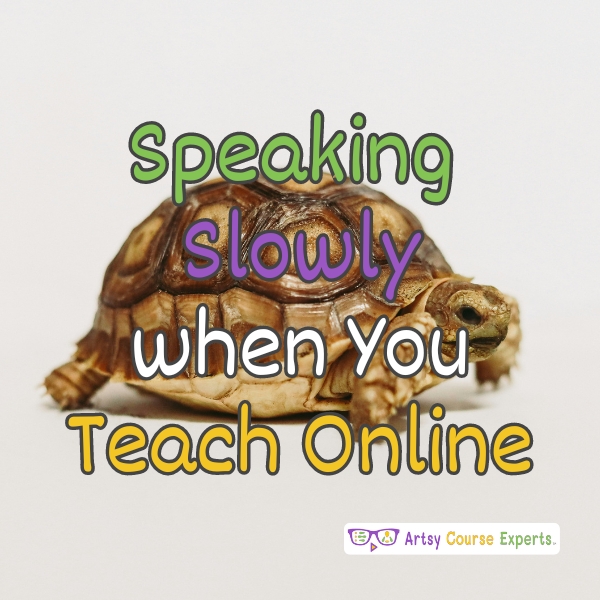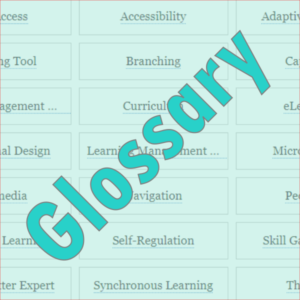Introduction
In our fast-paced world, where everything seems to be in a hurry, speaking slowly holds remarkable teaching value. Whether we’re communicating with students, colleagues, or even friends, our speaking pace can significantly impact understanding and retention.
Are you having trouble teaching, even though you’re skilled at some creative tasks? In this lesson, we’ll explore teaching techniques such as speaking slowly. This can help your students understand better, learn more quickly, and grasp advanced topics. Your online courses will become more successful.
Let’s delve into the importance of speaking slowly when teaching. We’ll discuss why it’s important and how to use this technique effectively. Then, we’ll provide an example to illustrate its benefits. Finally, we’ll summarize our top tips.
Challenges online course creators can face if they don’t use the teaching value of speaking slowly:
- Students may struggle to follow along with the lesson.
- Information might be misunderstood or misinterpreted.
- Students may lose interest or become distracted.
- Non-native speakers could find it difficult to understand.
- The course content may seem overwhelming, leading to lower retention rates.
Video Lesson – Have Your Students Learn Faster and Your Online Courses Will Be Much More Successful
Who Can Use?
Almost any teacher or professional can use the teaching value of speaking slowly to ensure students can easily follow along with detailed explanations of topics.
- To clearly articulate detailed instructions for intricate weaving or stitching techniques.
- To explain the nuances of camera settings and composition, allowing students to absorb the information at a comfortable pace.
- To emphasize key points and allow for better comprehension of complex news reporting or storytelling techniques.
This can work for a wide range of professionals like textile designers, photographers, and journalists.
What Is It?
A cohort is a fancy word for when we’re teaching a group of students simultaneously, and they go through a curriculum together in a small group. Using cohorts for your online courses involves organizing groups of students who start and finish the course, fostering community, collaboration, and accountability among learners. These cohorts facilitate interaction, peer support, and engagement, enhancing the overall learning experience for students.
Why Use It?
Teaching slowly means speaking at a relaxed pace when you’re teaching. It’s important because it helps students understand better and learn more effectively. When you speak slowly, it gives students time to process the information and keeps them from feeling overwhelmed. So, it’s a valuable skill for teachers to have. It’s a basic teaching technique to slow down to accelerate the speed of student learning.
Speaking slowly in teaching allows students to understand new information and gradually progress to more challenging topics rather than overwhelming them with excessive information. Many online course instructors overload students with information to showcase their knowledge, but this approach can overwhelm new learners.
By breaking down the information into smaller, manageable chunks and delivering it slowly, students can better digest the material. This gradual approach enables students to master the skills being taught, as they can build upon each piece of information in a structured manner.

How-to Guide
Let’s look at a guide from two perspectives.
Teacher’s Point of View
This is all about how you speak and your methods:
Speak Slowly
Start by speaking slowly. Be mindful of what you say. You might be excited about your content, but when teaching specific techniques, remember to slow down and not rush through everything. It’s essential to go slow so students can understand new words. They won’t be familiar with these concepts, so take your time.
Use Simpler Words
Choose simpler words, especially for students. If you can say something more simply, do it. Later, you can support or explain complex words by breaking them down using synonyms, visuals, or examples. The key is to be mindful of the words you choose.
Avoid Acronyms and Jargon
Avoid using industry phrases, three-letter acronyms, or other terms that people outside your field may not understand. Break them down and explain them. You can also teach these terms, but don’t assume students know them at different levels.
The level of complexity in your teaching will vary depending on whether you are teaching beginners, intermediate, or advanced students.
Watch Cultural Memes
There might be phrases like hitting home runs. If you know what baseball means, that’s great. If you’re not a baseball fan and you’re hitting home runs every week, then that may not be clear to everyone else.
You need to be aware of your memes. Because of a generation, or maybe because of a culture, your ethnicity, the country you’re from, whatever it may be, or even an internet meme, not everyone is up to date with the latest trends.
Watch your cultural memes if you use them, as it should make sense for your audience. If not, break it down so everyone can understand. Then you can add them for fun, but at least you’re breaking the information down and speaking clearly for everyone else.
Chunk Content Into Pieces
Teachers need to chunk content into pieces. Don’t just open a slide and rush through it with one long sentence or fly through an example as you teach different things. You need to break it up into three, five steps, or whatever works best.
Chunk the content and then go through each piece step by step. Also, do this in phases. The first time, introduce your chunks and then go through them again with more detail if you want to break them into learning blocks.
Pause and Listen Virtually
As a teacher, particularly those teaching online, coaching, or in webinars, it’s common to want to keep presenting without stopping. Even if your students are not physically present, whether they’re quiet in a Zoom call or leaving comments, it’s essential to take pauses. When delivering content, make sure to pause. This gives your students time to understand and process the information you’ve shared. It also helps vary your speaking pace and prevents constant delivery. Break up your lessons with pauses between different parts, bullet points, or chunks of content.
Repeat Words and Steps
Repeating words and steps is crucial in teaching. Speaking at different speeds is vital – start slowly and then gradually pick up the pace or use other words. After explaining a concept, consider demonstrating it with your students. At the end of a module, review the material you’ve covered. Repetition is essential in teaching, so explain things slowly at least once or twice for better understanding.
Student’s Point of View
These are all the benefits the students will receive when you, as a teacher, adjust your delivery.
Helps Understand Words
From the student’s point of view, when they hear the teacher speaking slowly, it helps them understand actual words. They might not grasp the words at first; they might listen to something and not know you’re saying two or three words.
If it’s a fast phrase that’s combined and they’ve never heard it before, breaking it down word by word or speaking slowly, as well as maybe supplementing with subtitles or demonstrating with your hands on camera using a second camera or inserting a still image or a PDF with a resource can be helpful.
Pauses Give Time to Digest
After you’ve said a bunch of things, students are processing it. They might be taking notes or following along. Taking pauses helps them not to drown in new information.
Can Build Up to Bigger Chunks
All of this allows them to build up to bigger chunks. As they’re learning slowly, piece by piece, they can combine those pieces. They can not only be familiar with topics but start to understand as they’re building up and using those initial words or lessons to build up to bigger, more advanced skills.
Bridge From Prior to New State
Remember, that’s the reason they’re taking this online course or your seminar or whatever it is. They’re trying to transition from an old state where they didn’t have a skill or didn’t know how to do a sure thing to reach this new state where they’re transformed.
From a student’s point of view, they’re being transformed into this new skill, state, and ability. That’s important; you should also consider that English may not be their first language. With the internet, English may not be a student’s first language. Speaking fast, combining concepts, and intermixing without chunking will slow down students for whom English is not their first language.
Some May Not Be Aural Learners
There are different ways to learn: by reading, watching, hearing, using your hands. Some of your students may not be oral learners; they don’t learn best by hearing. They need supplementation. Some students may not learn best by listening; it’s not their strength. We can supplement that learning with pictures, videos, and hands-on demonstrations. Additionally, we can speak slowly, clearly, and with pauses in chunks to allow the audio delivery of your voice, tone, and excitement to flow through the camera.
Easier to Take Notes or Copy
From a student’s point of view, it’s easier to take notes or copy you with their hands or tools as you speak slowly, take pauses, and chunk information. It’s easier for students to process and follow along as they copy you and try to follow along.

Example: How Speaking Slowly Helps Beauty Students
Now, let’s explore some instances of how an online teacher instructing beauty could apply these techniques to enhance the delivery of her online course.
Speak Slowly
Let’s take a moment to consider some hypothetical content and rush through it to hear the difference. We aim for skin that looks smooth, neither dry nor oily. Additionally, there are several confusing nots.
Unless you’re very knowledgeable, it’s challenging to distinguish between the knots and the do’s. This illustrates the importance of speaking slowly. We desire skin that looks smooth, not dry or oily. Later, you can proceed with other techniques.
To reiterate, use an online screen with checkmarks. Do this, do that, X marks the no-go zones. You can supplement with visuals, but slowing the delivery will be beneficial.
Use Simpler Words
Outline your lips; if English is your first language and you’ve had some schooling and life experience, you may understand the term “silhouette.” However, others might get lost. You can still say “silhouette” and then pause to explain. Alternatively, you can initially describe it as creating an outline around your lips, employing the silhouette technique. By using simpler words alongside more specific ones, you cover different comprehension levels.
Avoid Acronyms
That brand was recently discontinued (DC). If you’re in the right crowd and familiar with that acronym or industry jargon, you’ll understand. Otherwise, you might be puzzled by “DC.” Instead, you can clarify that the brand was discontinued recently.
Avoid using “DC” without explanation. It’s better to clarify it with an example after mentioning the abbreviation. This approach ensures that all students understand, rather than losing half of them due to confusion.
Watch Memes
Let’s examine this example: It was like putting lipstick on a pig every single week. Depending on your location, whether from a different country or even within our own country, like Southern Texas versus New York or LA, you may not be familiar with that meme, causing you to lose people. Furthermore, what are you trying to convey? Are you just attempting to wrap up something or make it slightly prettier without addressing the underlying issue?
Chunk
Firstly, consider this example: His hair has to be cut, A, B, C, D. In this instance, his hair has to be cut, with all the details, colored in a certain way, with further information, and style, again with detailed instructions.
That’s quite overwhelming. It’s almost like a massive run-on sentence in writing. As an online teacher, we aim to break it down. First, we can introduce ourselves to the three sections or topics: Cutting, Coloring, and Styling. Let’s delve into each of these. Now, let’s break down these three aspects. We can introduce them with simple category names: Cut, Color, Style. Now, let’s proceed to discuss each in detail. For instance, when talking about cutting, explain what needs to be cut, then transition to the next topic. Next, we move on to coloring, where we elaborate on the process, duration, techniques, and areas to focus on. Finally, let’s address styling.
This approach is much better than presenting all the information in a large chunk, expecting students to grasp it all. Additionally, chunking is beneficial when combined with moments of pausing and repeating.
Pause
For instance, if you’re trying to convey a specific point, like the need for cleanliness akin to 80s movies, pausing allows for emphasis, almost like a mic drop moment. “It needed to look clean. Like in those eighties movies…” By pausing at the right moment, you can make your point effectively, allowing it to sink in. If you integrate these techniques, you’re less likely to lose your students.
Repeat
Repeating doesn’t mean just saying the same word over and over. You can approach it from different perspectives. For example, flat eyeshadow is sometimes referred to as matte eyeshadow. Now, you can repeat this concept, but maybe from a different angle or with a slight variation.
You can repeat exactly what you said or offer a slightly different version. For instance, “Flat eyeshadow is like matte eyeshadow—both are smooth and matte, akin to painting.” After delivering a sentence in your industry terminology, please take a moment to repeat it, almost like a pop-up on the screen. You’re verbally providing that little reminder pop-up, just like a yellow post-it note. These are some techniques you can employ to teach more effectively.
Frequently Asked Questions About the Teaching Value of Speaking Slowly

Summary – The Teaching Value of Speaking Slowly
Speaking slowly when teaching is super important. It helps students understand better because they have more time to think about what’s being said. Also, using simpler words and breaking down big chunks of information into smaller parts can make learning easier. Pausing now and then and repeating things in different ways can also really help.
Speaking slowly leads to happier students, often resulting in more positive reviews. So, to enhance your teaching, remember the value of speaking slowly.
Tips for creative online course creators when using the teaching value of speaking slowly:
- Use visuals like pictures and diagrams to support your explanations.
- Encourage questions and discussions to engage students.
- Use stories or real-life examples to make lessons more relatable.
- Incorporate humour to keep students interested.
- Provide opportunities for hands-on learning or practice.
- Offer feedback and encouragement to support student progress.
- Provide additional resources or materials for further exploration.
- Keep the pace steady to avoid overwhelming students.
You should be a little smarter now. Thanks for hanging out!
Please subscribe to get more tips for creative online course teachers.
More Tips For Online Teachers
These lessons can also help you with Marketing, Sales, and Technology:














